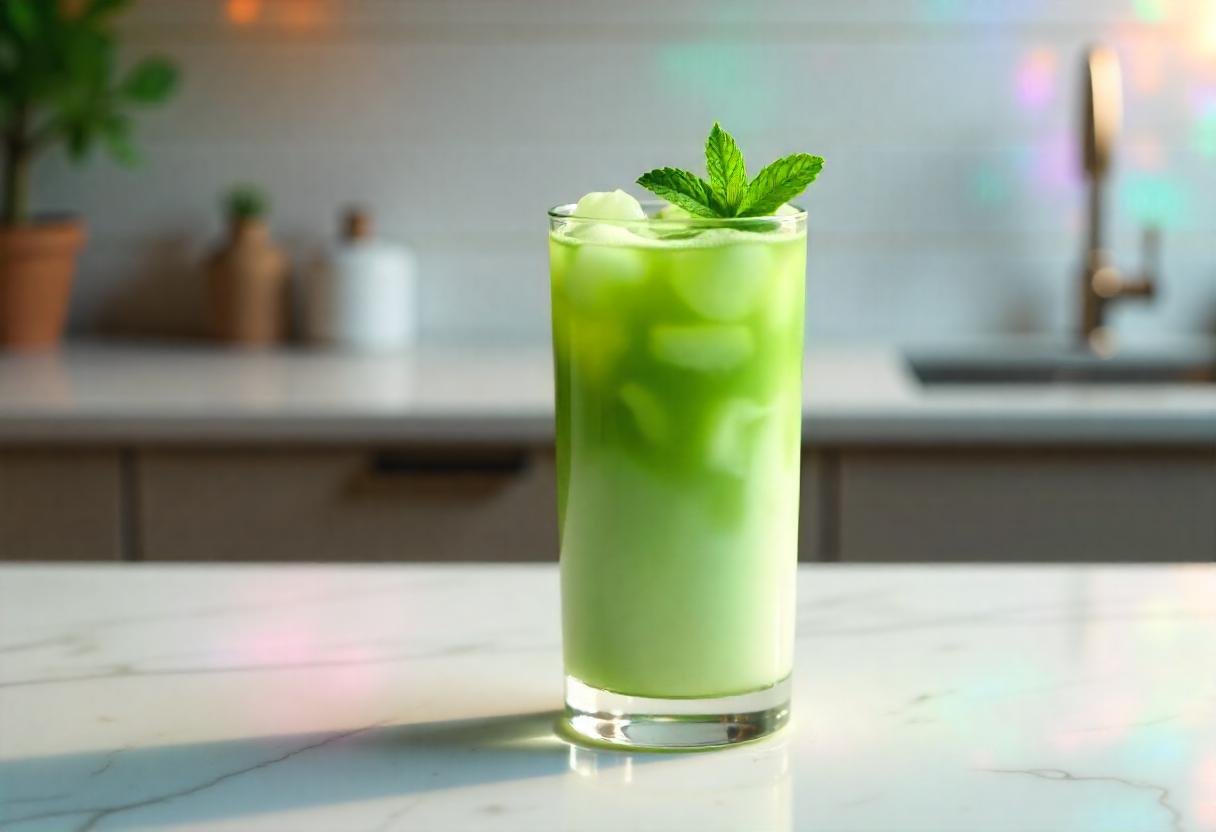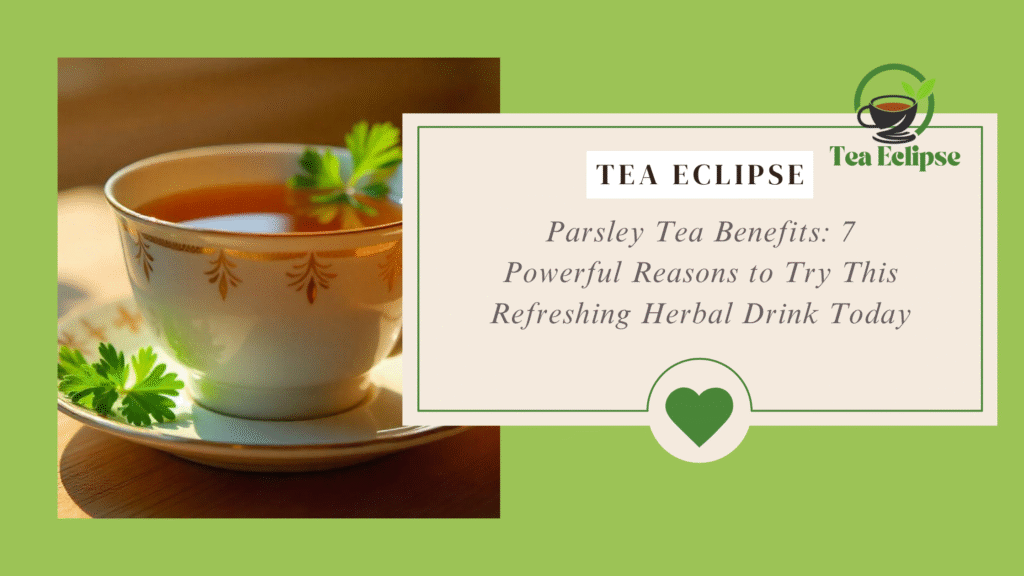Table of Contents
Introduction: Why the Matcha Tea Latte Deserves a Spot in Your Daily Ritual
That is why the matcha tea latte has become one of the most favorite things of all in our kitchens or our cafes all over the world. This special Japanese drink encompasses a uniquely beautiful green color, an earthly taste, and creaminess in a single mix of decadence and health.

Debatably the prettiest drink of all, matcha tea latte is also a balanced, steady energy that lasts without the shaky caffeine high and crash. L-theanine balances the effects of the caffeine, creating a smooth energy experience. Then there is the potent dose of antioxidants, chlorophyll, and metabolism-stimulating compounds, and you can see why matcha has taken the health-minded sipper by storm.
In this tutorial, you will get to know 5 easy yet effective steps to make a cafe-like matcha tea latte at home. Whether it is how to select the perfect matcha to get the milk frothed to the best consistency, we will guide you through each step necessary to make your daily drink into a winding, stimulating practice.
1. Select High-Quality Matcha for Vibrant Flavor and Color
Everything about the making of the ideal matcha tea latte starts with the matcha powder used. Matcha is not made equal- and in case you want a smooth yet tasty, a tantalizing green color latte, begin where it ends by comprehending matcha grade as well as picking the finest.
Ceremonial vs. Culinary Grade: What’s the Difference?
- The youngest and tender leaves grow and are used to make ceremonial grade matcha. It is a finely stone-ground with a lively green color, having an inherently sweet, complexity-rich, umami taste, perfect to enjoy by itself or in top-quality lattes.
- Culinary grade matcha is cheaper and a bit bitter and is used to make a cake, smoothie, or combined drink. Although it would be good in daily latte drinks, it is not high enough to remove the crashiness and be bright like ceremonial.
Ceremonial grade is one of the accepted choices of matcha tea latte that is rich and satisfying.
How to Spot Fresh, Authentic Matcha
- Color: Electric, green (not dusky, mahogany, or yellow)
- Texture: Very-fine powder that is silky to touch with your fingertips
- Source: Seek matcha produced in respected Japanese production zones such as Uji (Kyoto) or Nishio (Aichi Prefecture), these territories have a longstanding bigger quality and customary procedures of developing.
- Packaging: Select matcha that is sealed and comprises opaque and airtight containers to limit it to light and air exposure
Recommended Brands for Beginners
These brands are good to start with, and they guarantee good quality:
- Ippodo Authentic Kyoto matcha, which is great when it comes to purists
- Encha – Ceremonial matcha (organic) clean finish
- MatchBar, easy to like, and not at all overwhelming, Matcha with a bold taste
- Jade Leaf- This is abundant, and both ceremonial and culinary products are sold.
Attributable to this, when investing in high-quality matcha, you get what you see: fresh, creamy, and textured latte with full-bodied, shopping flavors.
2. Sift the Matcha Powder for a Smooth, Lump-Free Latte
And by all means, do not omit the sift: a simple step that can easily ruin your matcha tea latte. Matcha powder is superfine, and it tends to clump together as well as have static electricity, particularly once stored over time. The act of sifting makes your latte smooth and lump-free, just like those made by the barista.
Why Sifting Is Crucial Before Whisking
The sifting process is done to disintegrate any finer clumps so that your matcha can create a smooth blend with water. It results in:
- A smoother texture
- Better flavor extraction
- More vibrant color and foam
Any failure to do so may lead to the formation of bitter areas of undissolved powder, leaving the drink lopsided and leaving your tongue textured.
Tools to Use: Simple but Effective
- The fine mesh strainer: This should be placed in a bowl or cup, and a spoon is then used to press intermittently to extract the matcha.
- Traditional matcha sifter: These are specially made to fit into Matcha, with a broader surface area and a smaller hole.
- Bonus hint: An Extra tip is to use a dry utensil, and always clean your hands; clumping can be caused by moisture.
How It Affects Texture and Taste
Sifted powder matcha is easier to mix, giving a foamy, creamy texture to the drink, adding a touch of subtle umami and naturally sweet matcha to your tea latte. It also avoids bitterness due to poor proportions.
Imagine sifting as a microsomia (a Microsomia can be performed in a second, but the outcome of taste and texture is enormous!).
3. Whisk It Right – Mastering the Traditional Frothing Technique
The specific ingredient to a well-made matcha tea latte is whisking. Blending powder and water is not the only way of doing it; it is also about smooth texture and the famous frothy top, which makes every single drink feel like a luxury.
The Traditional “W” Motion
Use a bamboo whisk (chasen) and whisk slowly using a W or M shape movement as opposed to a circular one. The method assists:
- Blend the matcha completely
- Add air to froth up
- The avoidance of clumps on the bottom should be prevented.
Whisk more or less for a minute to a minute and a half until a thin film forms on top.
Tips for Better Froth and Consistency
- Use warm (not boiling) water—around 175°F (80°C)—to preserve matcha’s flavor and nutrients
- To prevent breaking the tines on the whisk, you will want to pre-wet your whisk so that the tines become soft.
- Whisk in a wide, shallow bowl or mug so you can keep a more controlled airflow
- Do not overfill; a good amount of about 2 oz (60 ml) of water works well when it comes to whisking prior to encountering milk
No Bamboo Whisk? Try These Alternatives
- It can be used in a pinch with a milk frother (handheld), especially iced versions
- An electric whisk can be used, but a small one, and perhaps it would not make the same microfoam
The right whisking process makes the difference as it makes your matcha tea latte not only look beautiful but taste it as well. It is where tradition is combined with texture, but it is very fulfilling after being mastered.
4. Choose the Perfect Milk for Creaminess and Balance

The milk that you select may make a difference between a good and unforgettable matcha tea latte. The best milk brings out the earthy notes in matcha, balances it, and makes it smooth and rich like a cup of good coffee.
Best Plant-Based Milks for Matcha Tea Lattes
- Oat Milk: Oat milk is naturally sweet and creamy, which makes it the best choice to touch freshly ground coffee with a velvet texture and froth.
- Almond Milk –It is light and nutty, which makes it perfect to use when you want a light latte, but barista blends are better to make a foam.
- Soy Milk –It contains a lot of protein, good frother, and cuts down the matcha boldness.
The milk will come with a flavor profile of its own-you can taste a few of them and let it be the best match with your matcha.
Dairy Milk Options
- Whole milk will give you richness and a good foam.
- 2 percent or skim milk also works, although it might give a less dense, creamier texture.
Whether it is dairy or not, the matcha flavor is rather grassy and umami, and the smooth milk that is a bit on the sweet side is the one to balance it.
How to Heat and Froth Milk for a Latte-Like Finish
- Warm milk to about 150°F (65 o C): not boiling.
- Make a light foam using a milk frother, steam wand, or French press.
- On iced drinks, add cold milk and [optional] cold foam.
The endpoint in the luscious construction of an absolutely good matcha tea latte would be the addition of creamy milk. It enhances taste and experience when done right- Sipping hot or sipping cold.
5. Sweeten and Customize Your Matcha Tea Latte Like a Pro
Your matcha is finely blended, and milk is steamed properly; now it is time to sweeten your matcha tea latte down to your liking. Make it how you like it; it is healthy and tastes in both ways, bold and pure, or a tad sweeter and aromatic.
Popular Natural Sweeteners
- Honey – Brings in a floral richness which is very complementary to the grassiness of matcha
- Maple Syrup- Earthy, sweet with hints of caramel
- Agave or Coconut Sugar: Great Low-GI Alternatives
- Stevia or Monk Fruit – excellent choice if you are living sugar sugar-free lifestyle
Begin with an amount of 1/2 to 1 teaspoon and add or reduce it depending on your taste for sweetness. Sometimes, smaller numbers can be even better than ones that are simply enough to mask the natural bitterness of matcha.
Flavor Enhancers for a Signature Twist
- Vanilla extract: Say goodbye to bitterness and make matcha warmer
- Cinnamon or nutmeg; Add sweet, spicy flavors (also works on iced looks)
- Lavender or rose water – To finish delicately, flower-like
This simplicity can transform your matcha tea latte into a masterpiece that you will fancy each day.
Hot or Iced? Matcha Works Both Ways
- Hot lattes: You build these in your cup: add whisked matcha, then steamed milk, then add a sweetener, then stir.
- In the case of iced lattes, simply pour matcha over ice, add cold milk on top, and stir to mix. Top with cold foam on top to give that cafe-style look.
Your matcha, your regulations. Seasoning is at this point when the ritual can be yours, sip by pleasant sip.
Bonus Tips: Make the Matcha Tea Latte Part of Your Daily Ritual

Matcha tea latte is not only a beverage, but it could be a relaxing ceremony to start your day on purpose and with balance. And a couple of bonus tips to raise your experience:
Make It a Mindful Moment
The act of whisking and slowly sipping your matcha can turn into a calming ceremony. Please take a pause, before thou hast begun The busy day.
Prep Ahead for Busy Mornings
- Pre-measure and sift your matcha in small jars
- Have a matcha concentrate (matcha + water) in the fridge to make lattes on the fly on ice
- Instant heat and foam can be done with a milk frother
Store Your Matcha Properly
Store your matcha tea in a light-proof, airtight container and store in a cool place, or refrigerate. This makes it last longer in retaining the bright colour and gentle taste.
Conclusion: Your Café-Style Matcha Tea Latte Starts at Home
Now, at least you have all the required things to make the perfect matcha tea latte– the comforts of your kitchen included. Whether it is the important part of the high-quality matcha selection and lesser-known whisking technique, or selecting the flavor of milk that suits you best and sweetening it to your own liking, it all comes to the level that can only be obtained at barista status.
The most amazing thing is? It is not only that it tastes good, but also. Homemade matcha tea latte is a ritual of healthfulness, imagination, and relaxation that you can practice daily. Now get your tools, take your time, and pour at will- it just takes a few whisk strokes until you have a perfect cup.
Explore More Details – Click to Learn!
FAQs About Matcha Tea Lattes
The amount of caffeine in a matcha tea latte?
A typical matcha tea latte (using 1 teaspoon matcha) has about 3070 mg of caffeine, most likely. Compared with coffee, it contains less caffeine but lasts longer (due to the slow release form).
Is it possible to prepare a matcha tea latte without a bamboo whisk?
Yes! It is common to blend with a bamboo whisk (chasen), but it can also be mixed together with a milk frother, electric whisk, or a small blender.
What is the healthier one, matcha or coffee?
Matcha contains antioxidants, L-theanine, and less caffeine, which lets people remain calm and focused without experiencing any crashes. It is believed to be healthier than a cup of coffee, especially for caffeine-sensitive people.



